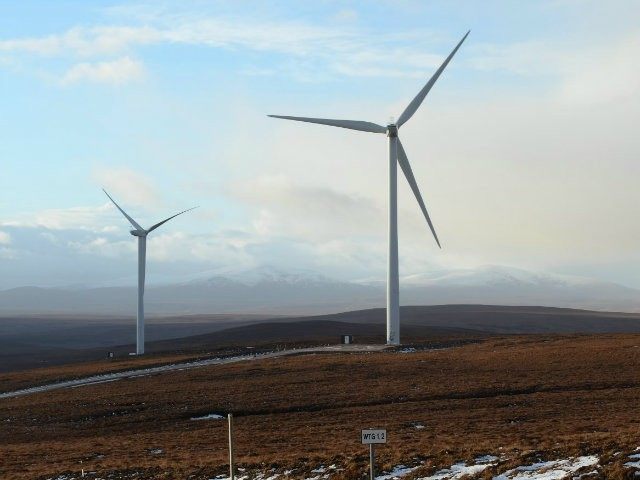Thousands of mega-wind turbines more than double the height of Big Ben could be set up across Britain if the wind power industry gets its way. A “cost reduction task force” has argued that constructing more mega-turbines would bring down overall costs. They also argue that planning rules should take clean energy targets into consideration rather than concentrating on the visual impact of turbines on the British countryside.
The majority of wind turbines currently installed in the UK measure 125m to the tip of the turbine, meeting the “informal tip height restrictions” in place in most areas of the country, and rotor diameters in the UK are rarely above 100m.
By comparison, the report points to countries such as Sweden and Germany which are leading the way in wind energy, and which tend to have higher turbines. In Sweden, around half of all applications in planning are for turbines measuring between 171–200m to tip, and rotor diameters of 100–105m are common. In Germany, the average tip height for all projects under construction is 165m, with an average rotor diameter of 99m.
According to the Onshore Wind Cost Reduction Taskforce, coordinated by RenewableUK, the consequence is that Britain is being left behind technologically as turbine manufacturers develop larger and larger turbines. They argue that this in turn drives up costs of wind power in the UK as wind power companies are neither able to take advantage of volume benefits of the large-scale manufacture of larger turbines, nor are they able to benefit from the latest innovations.
“In theory, optimum site conditions for wind energy would involve consistent and high wind speeds, with low turbulence and low shear,” the authors of the report say. “Higher altitudes tend to exhibit these features to a greater extent than those on lower ground, and in addition a larger rotor (for the same site conditions) will maximise the potential energy that can be captured, thus increasing yield.
“There can be significant yield increases from installing turbines with higher hub heights and/or larger rotor diameters. Specifically, comparable levels of output could be reached with fewer turbines installed. The extra capital costs associated with installing site-optimal turbines are more than outweighed by the extra energy yield.”
According to the Times, five turbines measuring between 149m – 175m to tip have recently been approved in the UK. Three of those, all measuring 175m, were approved by Hartlepool Borough Council in February. The company which submitted the plans had requested permission for 200m turbines, but the council reduced their maximum height by 25m due to concerns that they could fall on a nearby rail line.
The tallest turbines currently installed are located near Aylesbury, in Buckinghamshire, and Leighton Buzzard, in Bedfordshire, each of which has a stand alone turbine measuring 149m to tip.
But the task force has called for planning restrictions on turbine height to be watered down, arguing that considerations of visual impact should not be allowed to stand in the way of construction. They assert that on-shore wind “is now in sight of being cost competitive with new gas, meaning that very soon onshore wind will be the low-cost choice.”
In order to achieve that ambition, they recommend that “planning conditions [should] be justified not only based on mitigating adverse impacts but with due and explicit consideration of the impact on the national clean energy targets and cost to the electricity consumer.”
“The UK onshore wind sector is confident about its technology, and about its future. But having confidence that Government supports a low-carbon technology like onshore wind is critical,” they say.
However, John Constable, director of Renewable Energy Foundation, which opposes subsidies for turbines, said the task force had failed to account for the extra costs of managing a system increasingly dependent on intermittent wind. “This study suggests making life easier for developers by preventing local communities from objecting to ever-larger turbines. That is neither good engineering nor good politics.”

COMMENTS
Please let us know if you're having issues with commenting.